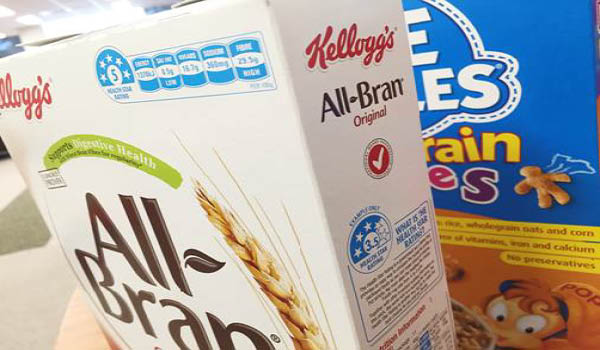Choice has taken aim at major food manufactures in Australia that are yet to sign up to the voluntary health star rating system, and accused Nestle and Kellogg’s, which have both implemented the code across their portfolio of brands, of misleading consumers with their packaging.
Launched last year, the voluntary front of pack health star labelling program rates the healthiness of products out of five stars. A product’s rating is calculated using an equation which takes into account the energy, saturated fat, sugar and sodium contents of the product and balances that against the positives of protein and fibre content.
Choice’s head of media Tom Godfrey told C&I Week brands yet to implement the system are “withholding information” from customers wishing to make informed choices about the products they buy. He said Nestle and its Milo brand and Kellogg’s cereal range are conveying “conflicting and confusing information” to shoppers.
The advocacy group has since launched a campaign against Nestle to have its Milo brand change it current packaging. Choice claims that Milo displays a 4.5 health star rating on each tin, however, that rating is based on Milo mixed with skim milk. Without milk, Milo has a 1.5 star rating.
“Choice has been monitoring the implementation of the health star program since it was launched and these were two examples [Nestle and Kellogg’s] that we found where we think these companies could do a lot better at the way that they represent the health star rating of their products to consumers,” Godfrey said.
Anita Catalano, corporate affairs manager, Nestlé Australia told C&I Week: “The health star rating scheme is based on a formula which assesses foods and drinks as they are consumed, and takes a wide range of nutrients into account. For Milo, which has long carried a recommendation that it be consumed in a glass of skim milk, this formula gives it a health star rating of 4.5. Milo powder also adds additional vitamins and minerals to what’s already in the milk, such as additional calcium, iron, vitamin D and B group vitamins.
“The Federal Government’s health star rating scheme is designed to help Australians recognise healthy food options – it’s a simple, at-a-glance tool to assess the nutrition of a product without having to spend extra time reading labels.
Catalano said to date, more than 60 per cent of Nestlé’s products carry the health star racking on pack and the company is continuing to roll it out to all applicable products.
“We are continually looking at ways to improve the nutritional profile of our products – it’s a journey for us that doesn’t stop. For example, in 2015 we finalised a two year, $7 million project to reformulate the entire range of Uncle Toby’s muesli bars, by increasing the amount of wholegrains and reducing sugar in some variants, and we’ve been steadily reformulating our breakfast cereal range for several years.
“Nestlé is committed to ‘walk to the talk’ on nutritional labelling. For us, adopting the health star rating scheme is not about selling more products, it’s about living up to our responsibility to help our consumers adopt a healthy and balanced diet.”
Choice has also accused Kellogg’s of being inconsistent with its implementation of the system across its brands such as Fruit Loops, All Bran and Nutri-Grain, advertising two star ratings on each cereal box – an example rating and the product’s rating.
“As an education message it falls down. They’re conveying conflicting and confusing information to consumers and we would like to see them fix that,” Godfrey said.
“I think it’s clear that two things are happening; one is you have got some pretty big players seeking to game the system, and then you have some pretty big players trying to hold out, hoping [the ratings system] is going to go away. The most effective way for the health star rating system to work is when a consumer can go into a supermarket and compare products within a category and these companies if they don’t roll it out then it wouldn’t enable people to make them an informed decision. It would be great if they did get on board and did right by their customers.”
A Kellogg’s spokesperson said Kellogg’s is not gaming the health star rating system and is currently in the process of updating its packaging.
“The star rating for all of our cereals is shown on the front of pack. An explanation of the health star rating system is shown on the side of our packs and is clearly labelled ‘example only’. This uses 3.5 stars regardless of the product – a 5 star food such as All Bran also shows 3.5 stars on the side. We are in the process of updating all of our packaging so that the example matches what is shown on front of pack. This has already been done for brands such as Nutri-Grain and Sultana Bran, with changes progressively rolled out across the range,” the spokesperson said.
Godfrey says it is in the interest of the consumer and enabling them to make informed choices that the program is made mandatory for food manufactures in Australia.
“There’s no doubt that making it compulsory and tightening up the guidelines would help consumers. What we need is all the big food manufactures to adopt the system so that if a consumer is looking at a product such as cereal they can see accurately see across all the different choices which ones are the healthiest. Having some of the big brands in the market holding out isn’t good and we think the likes of McCain, Mars, Mondelez, PepsiCo, Goodman Fielder and George Weston Foods should display the health star rating system on their products.”

